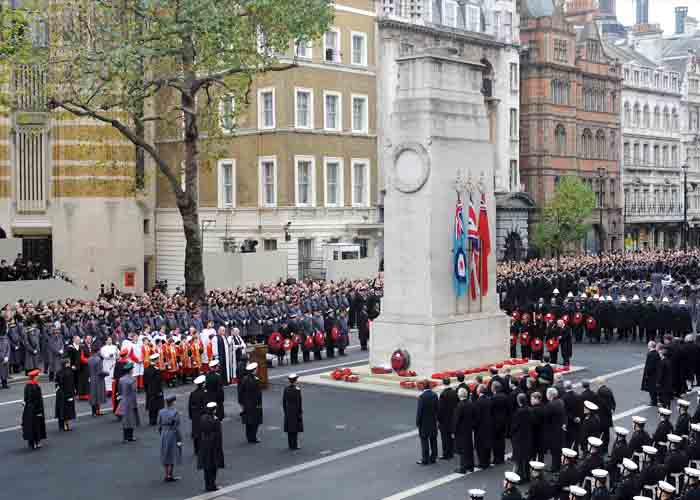
The Cenotaph
The Cenotaph
The Cenotaph is a war memorial on Whitehall in London, England. Its origin is in a temporary structure erected for a peace parade following the end of the First World War, and after an outpouring of national sentiment it was replaced in 1920 by a permanent structure and designated the United Kingdom’s official national war memorial. The Cenotaph – or ‘empty tomb’ in Greek – has been the focus of our nation’s remembrance for a century. Initially a temporary monument designed by Edwin Lutyens in 1919, the Cenotaph in Whitehall was replaced with the permanent Portland stone memorial and unveiled on Armistice Day, 11 November 1920. The memorial became a central point for all those whose family and friends had died during the First World War with no known grave. Now in the care of English Heritage, the Cenotaph is the site of the National Service of Remembrance every November. This annual service commemorates the contribution of all British and Commonwealth military and civilian servicemen and women involved in the two World Wars and later conflicts.
History
Edwin Lutyens’s original temporary structure for the Cenotaph was made of wood and plaster and erected as part of the Peace Day events of July 1919, at the request of Prime Minister David Lloyd George. At its unveiling it immediately won the hearts of the public. People spontaneously covered the memorial in wreaths to the dead and the missing from The Great War, and within a week close to a million people made the pilgrimage to pay their respects. The public’s enthusiasm led to the Cenotaph becoming a permanent and lasting memorial in Portland stone and it has since played host to the Remembrance Service for 100 years.


